If asked, you could probably easily name imperiled African wildlife species: elephants, black rhinos, lions. The plights of these animals are featured in nearly every major media outlet.
Oddly, another threatened creature has received far less attention. It’s especially surprising since this is one of the most recognized and beloved of the world’s creatures: the giraffe.
“There has not been a lot of research on giraffes,” says Jenna Stacy-Dawes, research coordinator for the San Diego Zoo’s Institute for Conservation Research. “Some conservationists are calling it the silent extinction.”
Since the 1990s, reticulated giraffe populations have decreased by 70 percent. Once almost taken for granted as an abundant animal, now giraffes may be slipping away without public notice.
Fortunately, there are research and conservation efforts to understand the threats to giraffes and how they can best be addressed. Best of all, you can help in the effort – without even getting up from your computer.
A Community-Led Effort
The San Diego Zoo and a long list of partners including The Nature Conservancy began a project in northern Kenya, where researchers estimate that the reticulated giraffe has declined from 36,000 animals to fewer than 9,000. Stacy-Dawes says the declines are due to people encroaching on giraffe habitat, degradation of that habitat and poaching.
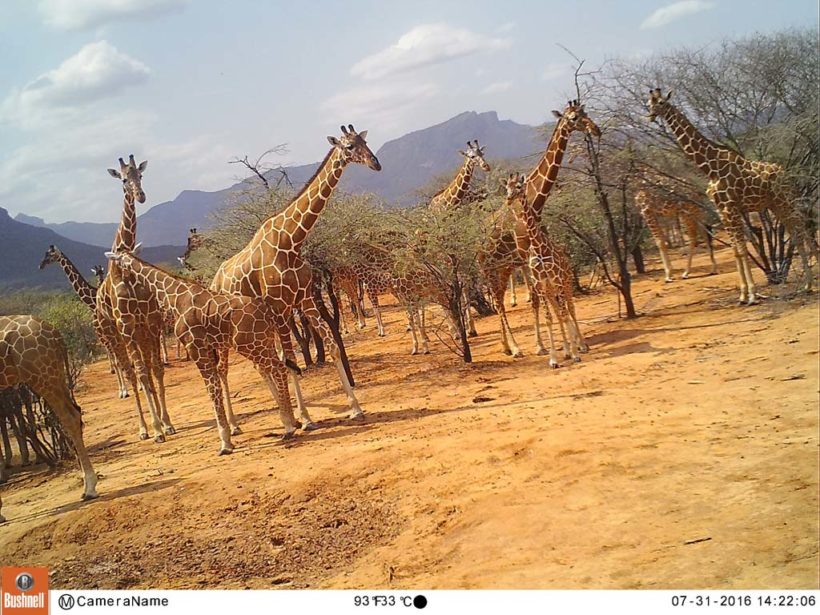
The conservationists are researching giraffes on two large conservancies, Loisaba Conservancy, which The Nature Conservancy helped protect and establish for the Loisaba Community Trust, and Namunyak Community Conservancy, one of 27 conservancies supported by Nature Conservancy partner Northern Rangelands Trust.
Conservationists realized they must understand the issues facing giraffes to better design conservation strategies. In particular, they wanted to learn the giraffe’s habitat preferences and how they responded to the presence of livestock.
“Do giraffes move out when cattle move through an area? Do they return after the cattle have left? Does the presence of cattle cause the giraffes to just move at night?” says Stacy-Dawes. “These are the kinds of questions our research is intended to answer.”
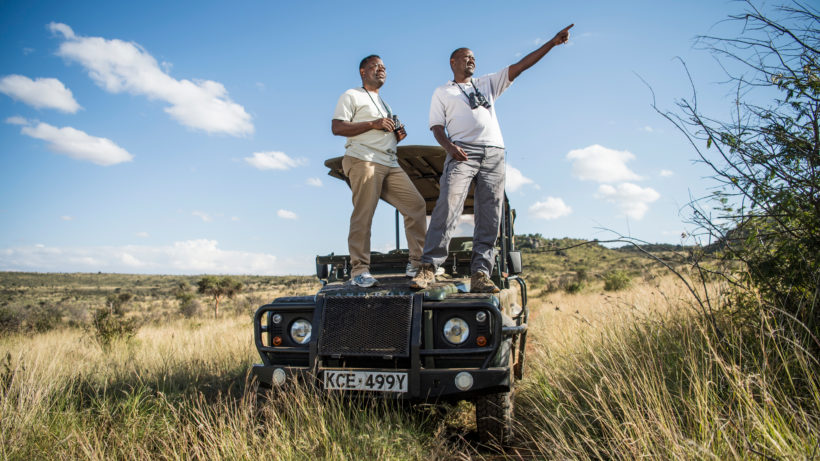
An important component of the research effort is that it is led by the community. Twelve researchers, selected by the local community, form the “Twiga Walinzi” (giraffe guards in Swahili). They set out and maintain motion-activated field cameras to understand the abundance of giraffes (and other wildlife), as well as their habits. According to the San Diego Zoo, the Twiga Walinzi “continually monitor the giraffe and maintain the cameras, retrieve the data-holding memory cards, conduct surveys and community outreach, and remove snares from the habitat.”
The San Diego Zoo also notes:
“From this data we can start to look into habitat utilization by giraffe – why are they favoring these areas, is there specific vegetation in these “hotspot” areas? These maps can also highlight the importance of working outside of the conservancies and within the communities that border the conservancies. Giraffe do not abide by the ‘borders’ of the conservancies as we can see by these maps. While they may be favoring the areas within the conservancies, we can see that they are occurring outside of the conservancies as well, meaning they are co-occurring with these communities.”
The project also donated 40 desks and education materials to a primary school just outside the Loisaba Conservancy. “The community is at the forefront of this project,” says Stacy-Dawes.
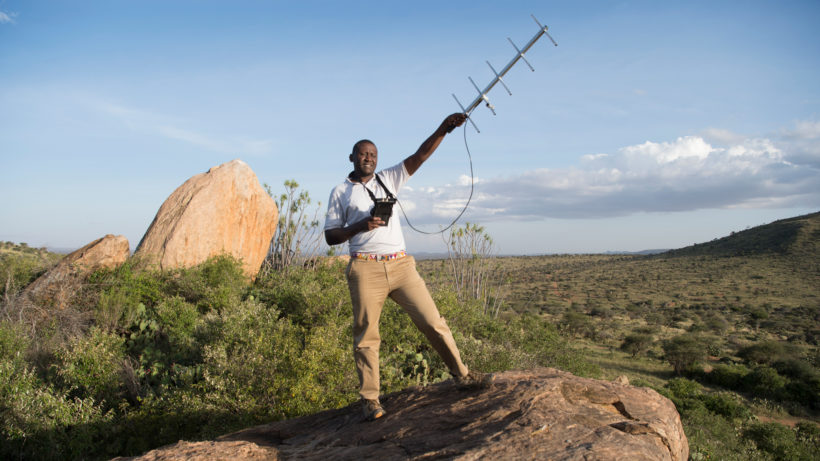
In 2017, the partners also affixed solar-powered satellite GPS tracking devices to 11 giraffes to understand their movements. Unfortunately, two of those animals were poached, but the remaining giraffes’ movements will provide valuable data.
“Better trend data on giraffe numbers and movement will greatly help us design conservation efforts and raise resources required to protect giraffes over time,” says Matt Brown, Managing Director for The Nature Conservancy in Africa.
One of the biggest tasks in all this is actually processing the data captured by the motion-activated cameras. With 112 motion-activated cameras working all day and night in a wildlife-rich area, there are a lot of photos to search. More than 1 million, in fact.
That’s where you come in.
Wildwatch Kenya: Enjoy Wildlife Photos and Help Giraffes
Wildwatch Kenya is a citizen science project that provides you with camera trap photos and you record any animals you see in the images.
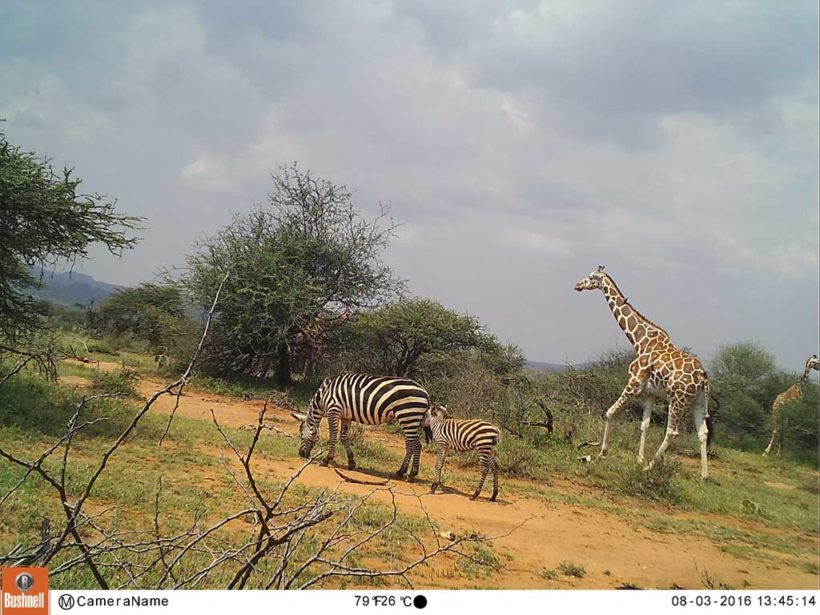
The project continues to analyze photos (Update: Readers of this blog have been really helpful to the effort. Thank you! The project is continuing to keep up the good work). The project is open to anyone, regardless of age. You will enjoy a diversity of animals in the photos, from well-known species like elephants and zebras to really cool smaller animals like honey badgers, bat-eared foxes and aardvarks.
It is very easy and intuitive, and there is a helpful guide that allows you to easily identify animals. During the course of writing this blog, I checked it out and quickly found myself immersed in it. Within minutes, I recorded hyena, zebra, impala, dik dik, warthog and more (but no giraffes).
“The data we gather will be vital in understanding what we can do protect giraffes and other wildlife,” says Stacy-Dawes. “We will be able to track areas where we’re seeing a high volume of giraffes. We couldn’t do this without the help of citizen scientists.”
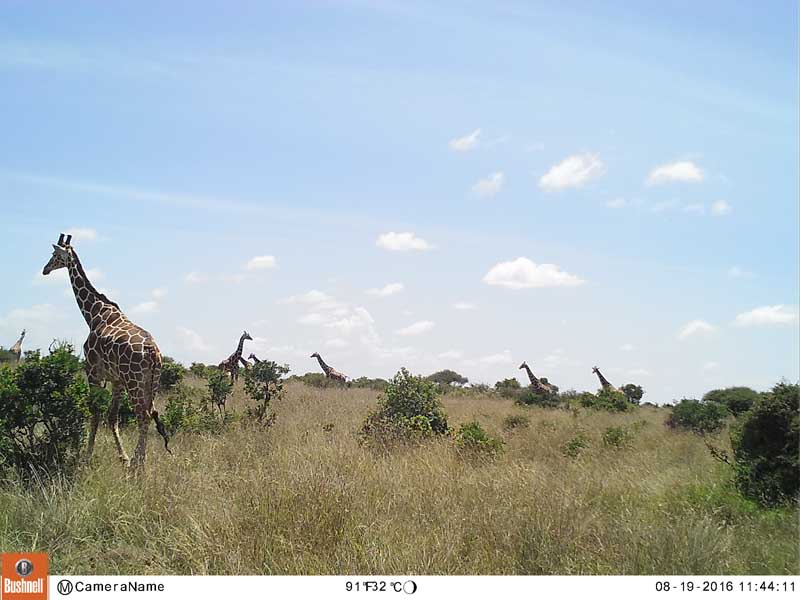
Appreciating the Giraffe
It’s often said that most people only care about protecting the large, charismatic wild animals. But in the case of the giraffe, I wonder at times if it’s so familiar that we take it for granted. It’s in children’s books and nature documentaries, and is one of the most common animal toys. They are often exhibited in zoos.
I’ve been fortunate to have taken several African safaris, and giraffes are generally very easy to spot – in no small part because of their large size. They are a spectacular animal, but I’ve noticed that after a few sightings, most people want to seek out the more elusive species.
Having a 3-year-old has enabled me to see the giraffe anew; it’s undoubtedly his favorite animal. And when you really observe a giraffe, it’s a remarkable beast, from the neck to its beautiful color patterns. Surely, many of us – even beyond the conservation community – love giraffes.
Here’s a chance to not take them for granted. To help them out, and spend some pleasant time on an Easter egg hunt of sorts, seeking out cool creatures in photos. Your observations can play an important role in making sure giraffes still roam the savanna, now and for future generations.
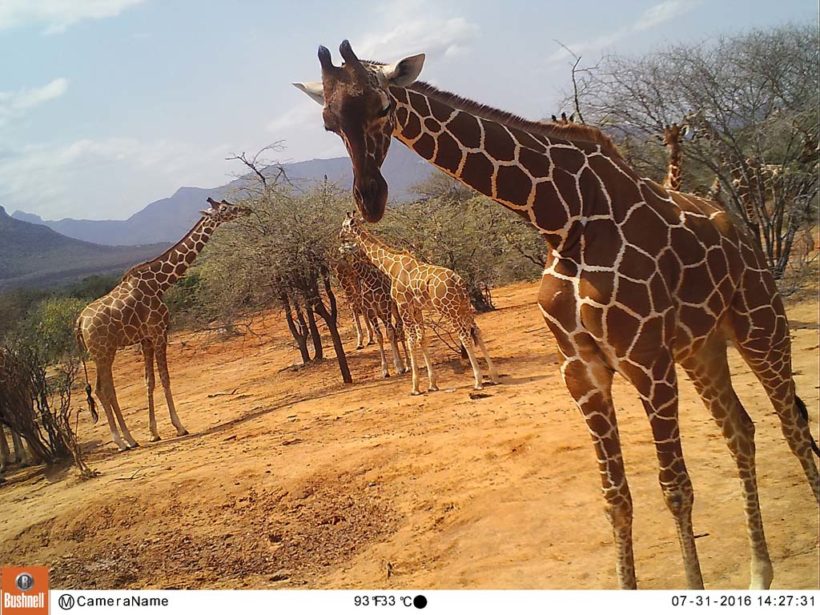
Wildwatch Kenya is an effort led by people in and around Namunyak Community Conservancy and Loisaba Conservancy, in collaboration with Northern Rangelands Trust, San Diego Zoo Global, Giraffe Conservation Foundation, The Nature Conservancy, Lewa Wildlife Conservancy, Sarara Camp, Smithsonian Institution, Senckenberg BiK-F, Global Conservation Force, Leiden Conservation Foundation, and Zooniverse.
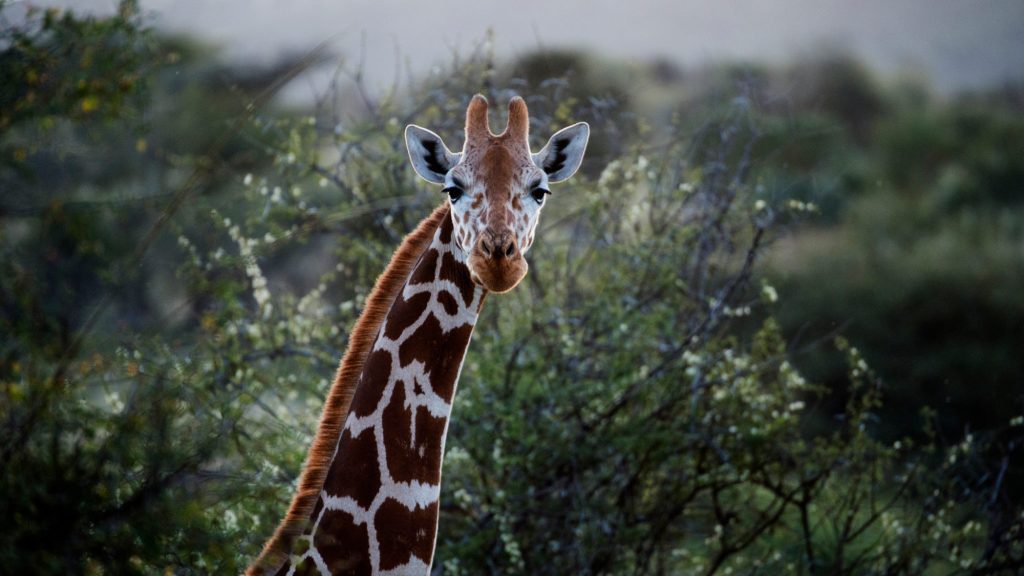



Hello where are all the giraffes stampede to they are our one of the several animals that was going on to need extents of extending careful care and attention ok up into the middle years of 2015 and through now 2018 so.. okay then something has come up and happened now look elsewhere for all nature conservancy plans is being pushed back and all emergency and existing problem issues arising are being collected and build up with following that more complex complications in any such matters and actions followed hand and hand and over and out this all shouldn’t have came to be maybe restorationists and conservancy CEO should act on instincts and welfare concerns instead of simplest upkeeping and lab studying mostly and pay attention back to the foundation of this organization and it natural intentions because these are GOD creatures and if they are disappearing that is just the same as life and lives that are lost everyday through destroyed damaged and tainted close minds ????✊
Is it too late to participate? This is a wonderful idea and I would love to join in.
Hi Linda, Thank you for your interest! The project is currently paused, it will resume when more images have been gathered. There are several other projects on the Zooniverse that contribute to conservation that you might enjoy: https://www.zooniverse.org/projects?discipline=nature&page=1&status=live
Mr. Miller: Thank you for the attention you are giving to the giraffe. It is unthinkable that wild animals are so recklessly killed, for a tail, or a horn, or a tooth. They contribute to the planet in so many ways. We have changed their habitats and yet they adapt and find a way to continue their species. But no species can survive when their patriarchs and matriarchs are killed leaving their young lost and confused, the babies being captured and taken away, and their “space” in this world reduced and divided. I am a docent at a local zoo and I don’t want to see these beautiful animals behind bars, but I know that if they weren’t, if they were in the remnant wild, they would probably be dead. Many of our visitors develop an attachment for an animal, and as a result care about what is happening to the species. The Citizen Science is a great way to get people to take part, to be active, and to learn more about this species. It’s May 2, so this particular activity, looking at photos, might be over, but I would like to do this too. Thank you for all you and The Nature Conservancy do.
I’m so alarmed at the photos of “trophy hunters” of giraffes on Facebook!!!! Just sickening. This must be stopped.
I will help save the Giraffes now and forever.
Great work… Desperately needed
Such quiet, peaceable and gentle animals are such a pleasure to see and observe. How an we help keep these alive and help them remain living for us to enjoy their silent beings with us? We need to know more about their habits and what they need to keep them alive. We need to know so much more about them. What they need to survive, what type of food they must have and their daily lifestyle.
I have been a supporting member of TNC since 1992. I have worked locally with the TNC in Portland, OR. I regret that I do not have access to the the digital equipment necessary to participate as a citizen science observer. I will explore how to remedy this situation!
what legitimate organization can I donate to help the Giraffe? I am on fb Ber Heidi
Hi Heidi, Any of the organizations involved in this project are legitimate organizations helping the giraffe. Thank you!
I believe in saving giraffes, and I believe in those people in the forefront of saving giraffes. For my self and my family that we may know of their presence on this earth. My wife and children and grandchildren and extended family around the world and my extending family of people that I don’t know now and may never, but we can support this fine and necessary animal. Please !
I would love to help these beautiful animals.
You are asking for real email but that is my only one.
I would love to help. What do I need to do?
Hi Annette, Go to Wildwatch Kenya: https://www.zooniverse.org/projects/sandiegozooglobal/wildwatch-kenya
Then identify the animals in the images. There are a lot of images to go through and your identifications help scientists narrow down which images have giraffes (which tells them where the giraffes were and when). Thank you!
Don’t let these beautiful gentle endangered giraffe slip into oblivion. They are endangered and need protection from hunters and poachers alike. Not to see their lofty heads above the trees and shrubs would be a tragedy. Extinction is forever. No coming back from extinction.
save these beautiful animals
Let’s save these majestic and graceful creatures!